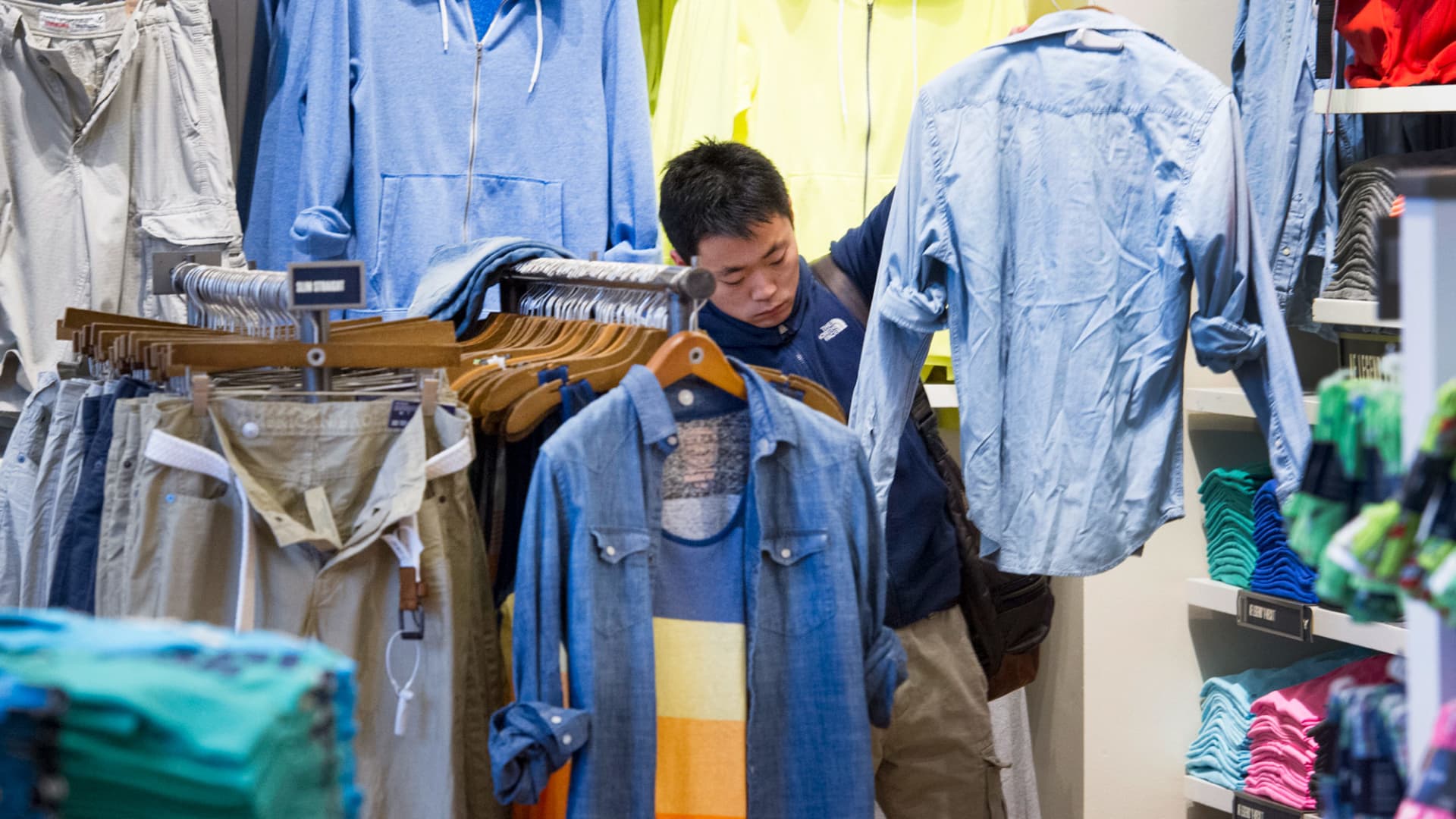Products You May Like
Excess inventory has racked up in many retailers’ warehouses and stores. But shoppers are still paying more as they refresh the closet.
Apparel prices rose 0.8% in June compared to May, and 5.2% year over year, according to the Bureau of Labor Statistics‘ consumer price index Wednesday. Overall, the inflation gauge, which includes everyday items such as food and gas, rose a higher-than-expected 9.1% from a year earlier.
Apparel trends are another mixed metric as economists and industry-watchers try to gauge the strength of the consumer and U.S. economy. In recent weeks, many prominent companies and investors have warned of a recession. Retailers, including Target, Gap and Walmart, announced plans for more markdowns to get rid of unwanted merchandise. The moves were expected to be deflationary.
Yet apparel sales and prices — at least so far — are topping last year’s levels. The labor market remains robust, too: The jobs report for June defied recession fears, as the unemployment rate remain unchanged and payrolls beat expectations.
“It’s all about experience,” said Kristen Classi-Zummo, an industry analyst who covers fashion apparel for The NPD Group. “A return to getting back out is really what’s driving the apparel growth. This experiential re-emergence that we still didn’t see fully last year.”
Some retailers have reported that, too. Levi Strauss & Co.’s revenue grew 15% year over year for the quarter ending May 29. Yet its value brands, which drive a small amount of the company’s overall sales and are sold by Walmart, Target and Amazon, saw mid-single-digit declines from a year ago, CEO Chip Bergh said.
Walmart saw a split in its apparel category, too. It aggressively marked down some of its clothing in the fiscal first quarter, as shoppers pulled back on discretionary merchandise. Yet the company’s merchandising chief, Charles Redfield, told CNBC in early June that the big-box chain could not keep up with demand for its more fashion-forward and higher price point brands, such as sundresses and tops from Scoop.
An abundance of the wrong stuff
Apparel sales in the U.S. grew 5% year over year for the period from January through May, and grew by 13% versus the same time in pre-pandemic 2019, according to NPD, a market research firm.
Formal attire, in particular, has picked up again as Americans head to weddings or spend more time back at the office, she said. When shopping for those occasions, some consumers are willing to spring for items that aren’t on sale.
Sales of women’s dresses grew by 42% year over year from January through May, according to NPD. That was also 14% higher than in 2019, before the pandemic.
That shift in consumer preference has hurt retailers that stocked up on the wrong things. Gap, which announced this week that CEO Sonia Syngal stepped down, said in its most recent earnings report that customers didn’t want the company’s many fleece hoodies and active clothes. It also had a mismatch of sizes of shoppers, as it made a push into plus-sized.
Abercrombie & Fitch and American Eagle Outfitters both reported a steep jump in inventory levels, up 45% and 46%, respectively, from a year ago from a mix of items not selling and supply chain delays easing.
Typically, an abundance of inventory sparks higher levels of sale promotions — something that’s already playing out at Walmart and Target, not just in apparel, but also in other categories such as home goods. June’s retail sales numbers, another closely watched economic indicator, will be reported by the Commerce Department on Friday.
Apparel is showing some signs of a pullback, however. As apparel sales rise by dollars, units have fallen about 8% versus the same year-ago time period, according to NPD — something that could drag down sales over time.
A survey by equity research firm Jefferies in June found that about 35% of consumers plan to or are currently buying less apparel.
There was a split between consumers in the survey, too. Those making $100,000 or more a year said they planned to or were currently spending less on services, such as restaurants and travel. Those with lower incomes were more likely to report they were already cutting back on apparel and groceries.
‘Tale of two consumers’
A year ago, apparel retailers had several factors that wound up working in their favor. Americans had extra dollars from stimulus checks. Some were still wary of spending those dollars on bigger trips, dining out or other services because of Covid concerns. Supply chain snarls limited inventory levels.
Retailers had a chance to “reset” and break a “vicious sales cycle,” Classi-Zummo said. That all contributed to retailers selling more apparel at full price.
Now, she said, apparel retailers have had to pass on more of their costs — such as higher prices for raw materials used to make clothing or gas needed to transport it. That’s driven up price tags on shirts, dresses and more.
Higher-income shoppers are helping buoy apparel sales, as they still have the means and willingness to pay for pricier brands and clothing items sold for full price. That may partially explain the inflated prices of apparel, Classi-Zummo said.
For instance, swimwear sales overall have declined after surging last year. But this year, the fastest growing segment is swimwear priced at $100 and over. Swimwear priced under $70 is driving the year-over-year drop, NPD found.
“There’s a bit of a tale of two consumers,” she said. “A lower-income household consumer might be thinking twice about an apparel purchase, whether it’s on sale or not. A higher-income consumer has not been affected yet — they’re still buying at a higher rate. The luxury market has still been on fire.”
